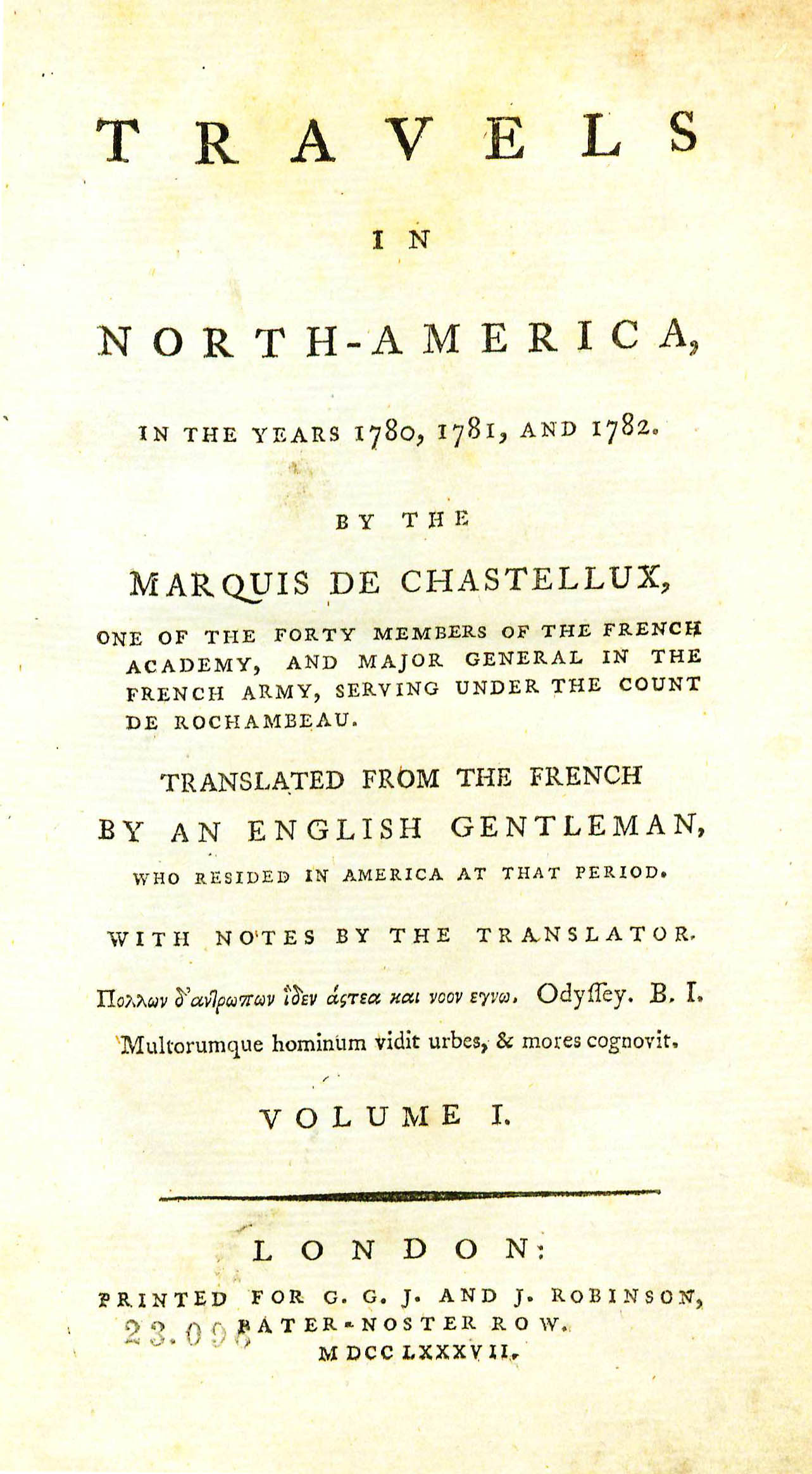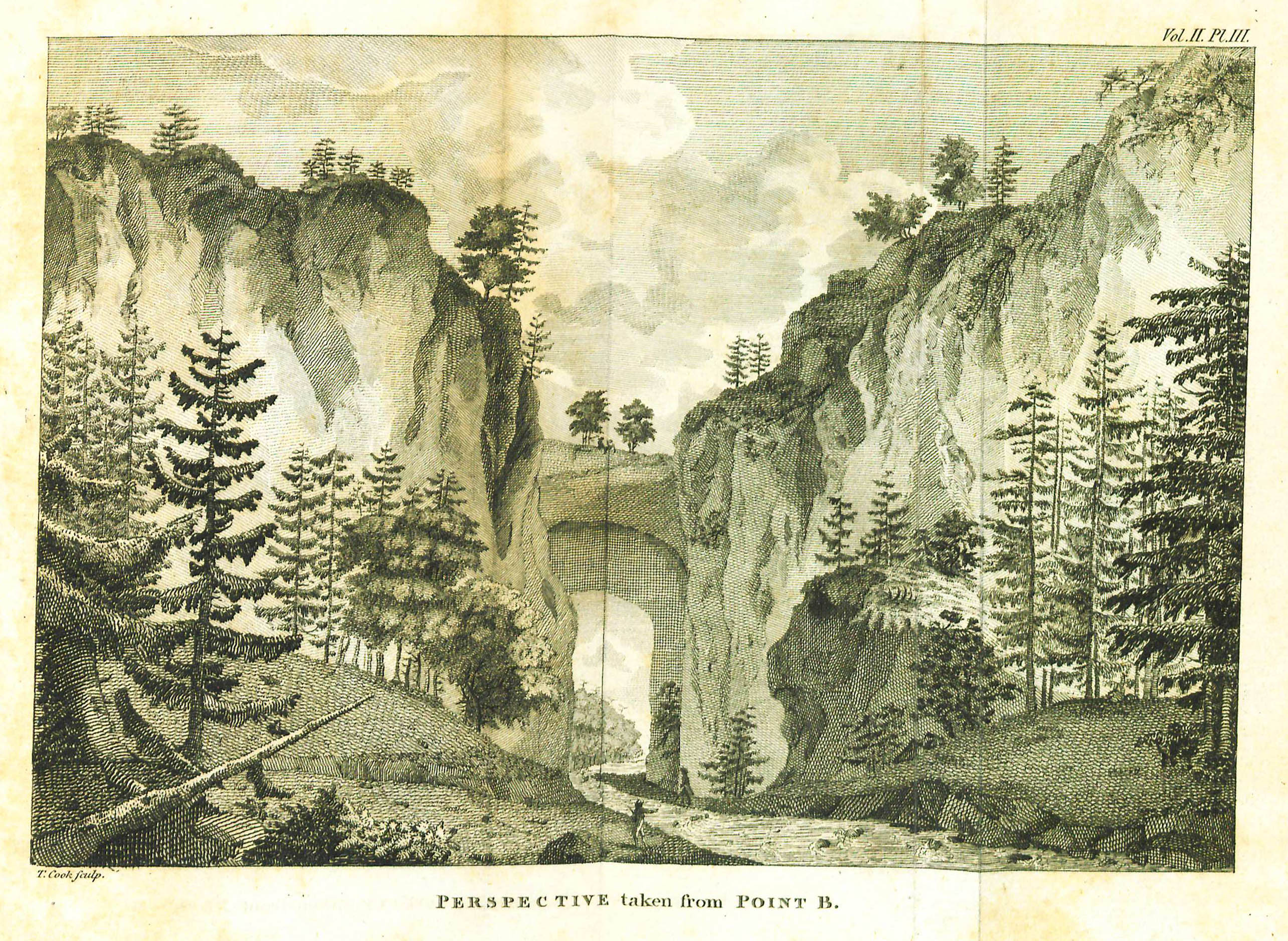Difference between revisions of "Travels in North-America"
m (→Evidence for Inclusion in Wythe's Library) |
m (→Evidence for Inclusion in Wythe's Library) |
||
| Line 27: | Line 27: | ||
The [https://digitalarchive.wm.edu/handle/10288/13433 Brown Bibliography]<ref>Bennie Brown, "The Library of George Wythe of Williamsburg and Richmond," (unpublished manuscript, May, 2012) Microsoft Word file. Earlier edition available at: https://digitalarchive.wm.edu/handle/10288/13433.</ref> includes the first English edition (1787) of Chastellux's ''Travels in North-America'' based on a few pieces of circumstantial evidence. Chastellux met [[George Wythe|Wythe]], and described the College of William & Mary in his work: | The [https://digitalarchive.wm.edu/handle/10288/13433 Brown Bibliography]<ref>Bennie Brown, "The Library of George Wythe of Williamsburg and Richmond," (unpublished manuscript, May, 2012) Microsoft Word file. Earlier edition available at: https://digitalarchive.wm.edu/handle/10288/13433.</ref> includes the first English edition (1787) of Chastellux's ''Travels in North-America'' based on a few pieces of circumstantial evidence. Chastellux met [[George Wythe|Wythe]], and described the College of William & Mary in his work: | ||
| − | < | + | <div style="overflow: hidden;"> |
| + | <blockquote> | ||
I shall therefore state that the College of William and Mary—the name alone denotes its founders—is a magnificent establishment which adorns Williamsburg and does honor to Virginia. The beauty of the building is surpassed by the richness of the library, and the worth of this library by several of the distinguished professors, such as Doctors Madison, Wythe, Bellini, etc. etc., who may be looked upon as living books, in which both precepts and examples are to be found.<ref>François Jean, marquis de Chastellux, ''Travels in North-America in the Years 1780, 1781, and 1782'' (London: Printed for G. G. J. and J. Robinson, 1787), 2:443.</ref> | I shall therefore state that the College of William and Mary—the name alone denotes its founders—is a magnificent establishment which adorns Williamsburg and does honor to Virginia. The beauty of the building is surpassed by the richness of the library, and the worth of this library by several of the distinguished professors, such as Doctors Madison, Wythe, Bellini, etc. etc., who may be looked upon as living books, in which both precepts and examples are to be found.<ref>François Jean, marquis de Chastellux, ''Travels in North-America in the Years 1780, 1781, and 1782'' (London: Printed for G. G. J. and J. Robinson, 1787), 2:443.</ref> | ||
| + | </div> | ||
</blockquote> | </blockquote> | ||
Revision as of 13:41, 7 August 2018
by François Jean, marquis de Chastellux
| Travels in North-America | |
|
Title page from Travels in North-America, in the years 1780, 1781, and 1782, volume one, George Wythe Collection, Wolf Law Library, College of William & Mary. | |
| Author | François Jean, marquis de Chastellux |
| Translator | George Grieve or J. Kent |
| Published | London: Printed for G. G. J. and J. Robinson |
| Date | 1787 |
| Language | English |
| Volumes | 2 volume set |
| Desc. | 8vo (22 cm.) |
| Location | Shelf C-2 |
François Jean, marquis de Chastellux Francois Jean, Marquis de Chastellux (c.1734-1788), served as one of the three major French generals sent with General Rochambeau to assist the Continental Army during the American Revolutionary War. Chastellux served during the war as the chief liaison between Rochambeau and George Washington.[1]
Travels in North America is a compilation of Chastellux’s journal entries and reflections on his time in America. Although he spent these years officially as a military officer, the work primarily focuses on the political and social condition of the colonies and their prospective future as a nation. The travelogue was translated into English and printed in London in 1787.[2]
Evidence for Inclusion in Wythe's Library
The Brown Bibliography[3] includes the first English edition (1787) of Chastellux's Travels in North-America based on a few pieces of circumstantial evidence. Chastellux met Wythe, and described the College of William & Mary in his work:



